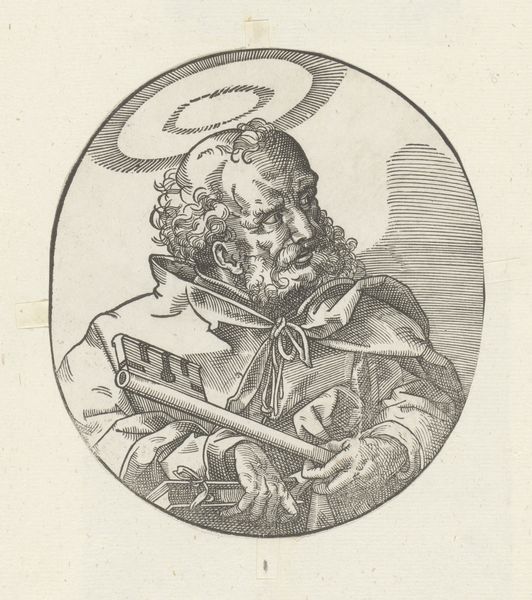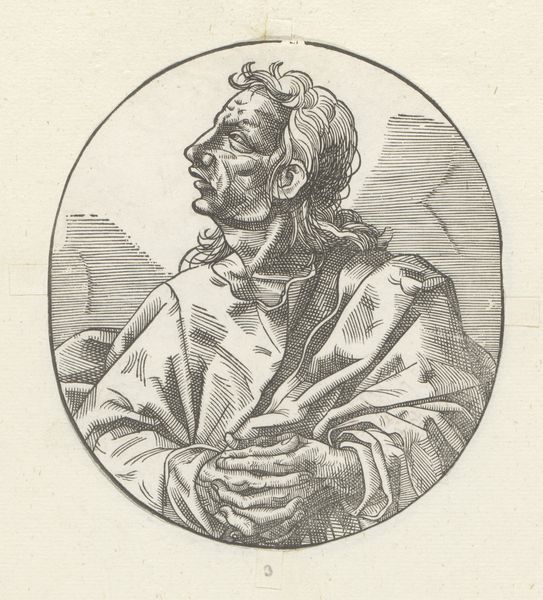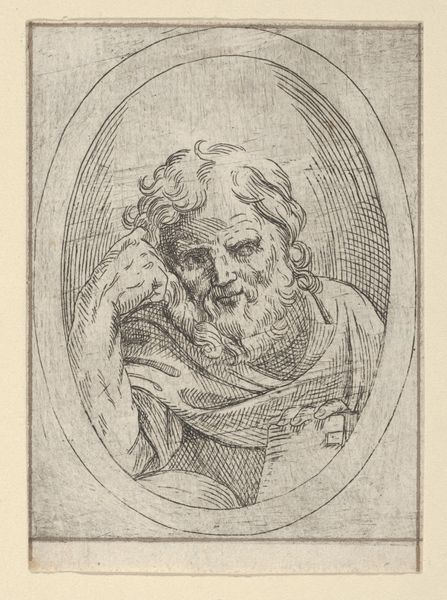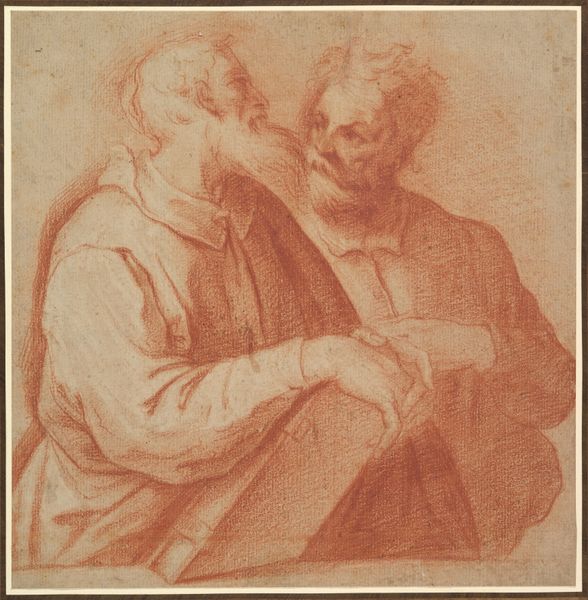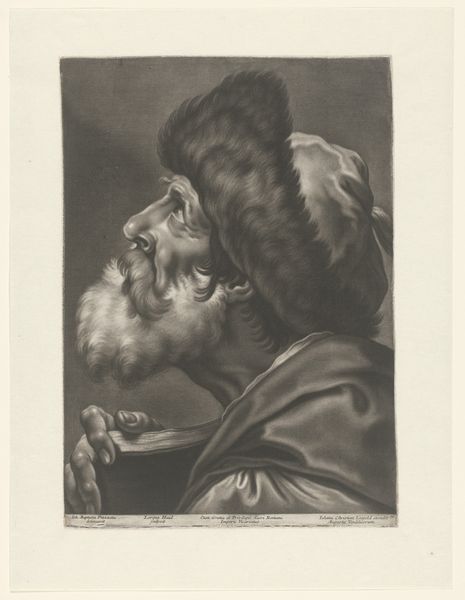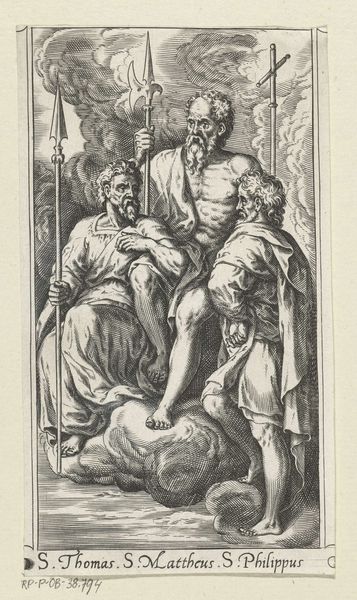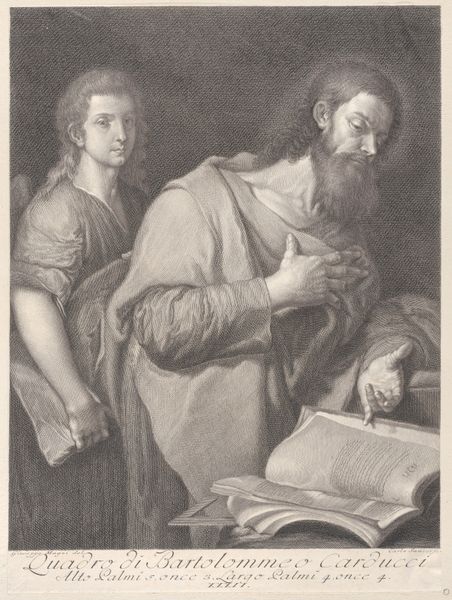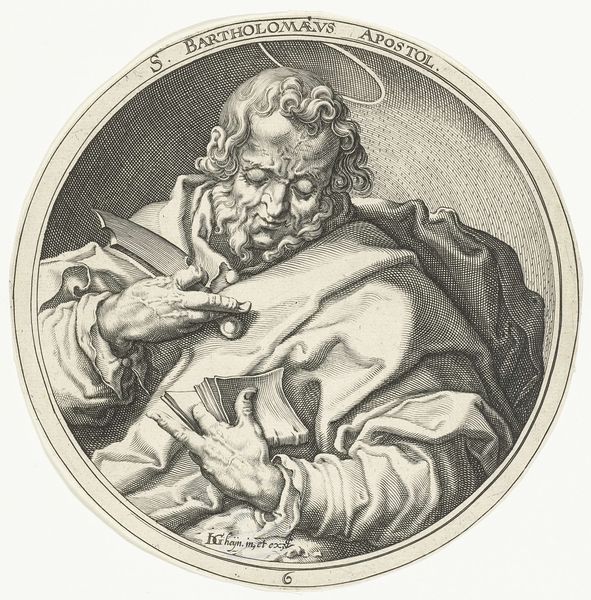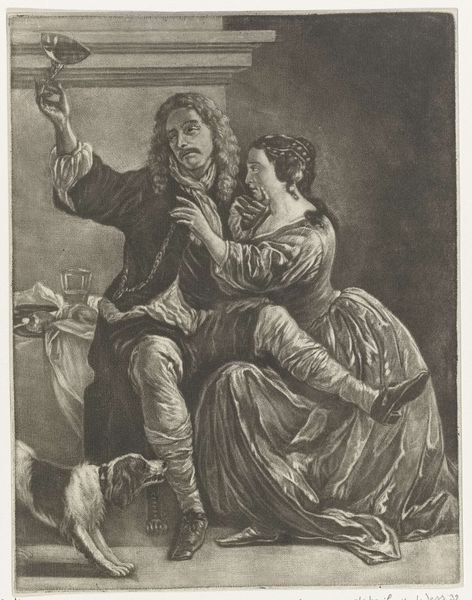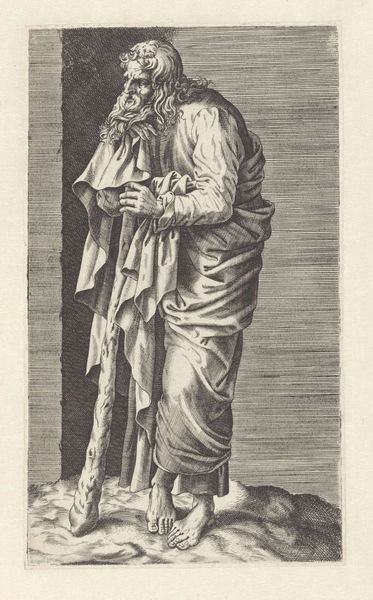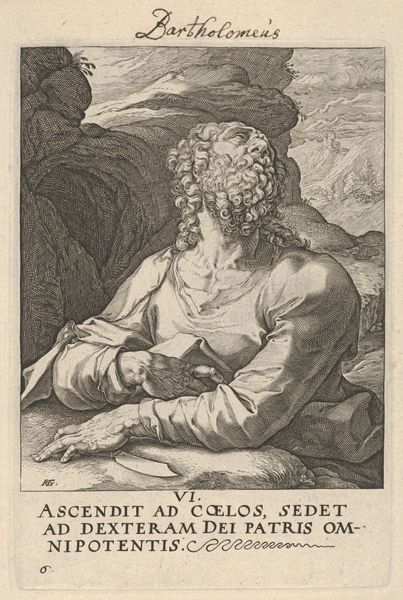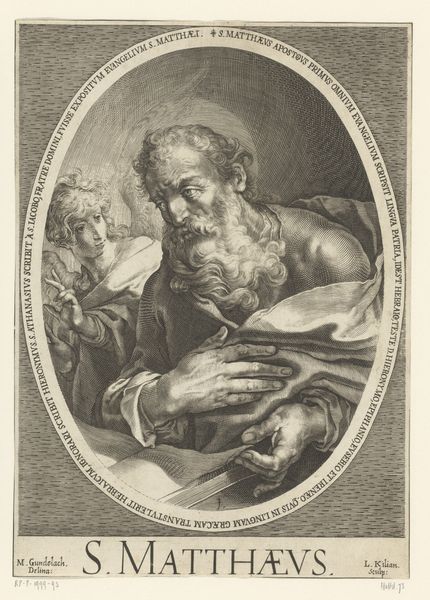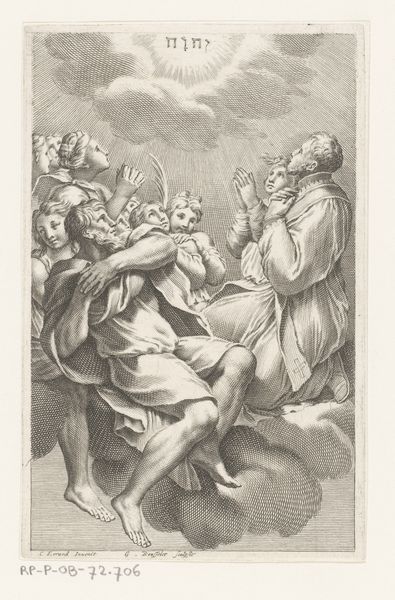
print, engraving
#
portrait
# print
#
old engraving style
#
figuration
#
line
#
history-painting
#
academic-art
#
engraving
#
realism
Dimensions: height 138 mm, width 113 mm
Copyright: Rijks Museum: Open Domain
Curator: This is a print entitled "Portret van paus Linus," dating from sometime between 1549 and 1584, by an anonymous artist. It depicts a portrait of Pope Linus, rendered in an academic, realist style using engraving. Editor: Immediately, I notice a real tension in the monochrome values, like the composition seeks a balance of light and dark yet maintains an unfinished appearance. What is emphasized by the line work here? Curator: Precisely! Look at how the composition guides our eye. The lines create a textural richness. The rendering of Linus’s beard and hair employs intricate, almost baroque curves that contrast the sharp, straight lines defining the book and his vestments. Note the emphasis on the interplay between organic and geometric forms. Editor: And, contextually, this feels rife with religious commentary and potentially the political symbolism of the era. The deliberate attention to detail on his face might communicate a certain character or intent, as it invites us to interpret this historical persona and relate to its broader themes of historical interpretation. Curator: Agreed, though the symbolism in this piece is interesting. Pope Linus directs our gaze towards the scripture, but away from himself. I wonder what one would've thought about its meaning then? The use of line creates an image that both is and isn't there all at once, so to speak. It is both materially present through the physical lines of the engraving and present conceptually. Editor: What I find quite telling, beyond technique and semiotics, is the decision to portray Linus with such stark seriousness—his deep brow furrowed, intensely focused. This piece serves, whether intentionally or otherwise, to emphasize the gravitas and burdens shouldered by this office. Curator: It is tempting to consider the potential intended audience for prints such as this. Was it to promote, document, satirize, or perhaps critique? These considerations may get us closer to what its intention might be. Editor: And with these lingering questions we’re left, as usual, looking at the artwork anew, right? It's still thought-provoking. Curator: Indeed. A visual statement which remains potent even now, long past its own time.
Comments
No comments
Be the first to comment and join the conversation on the ultimate creative platform.
